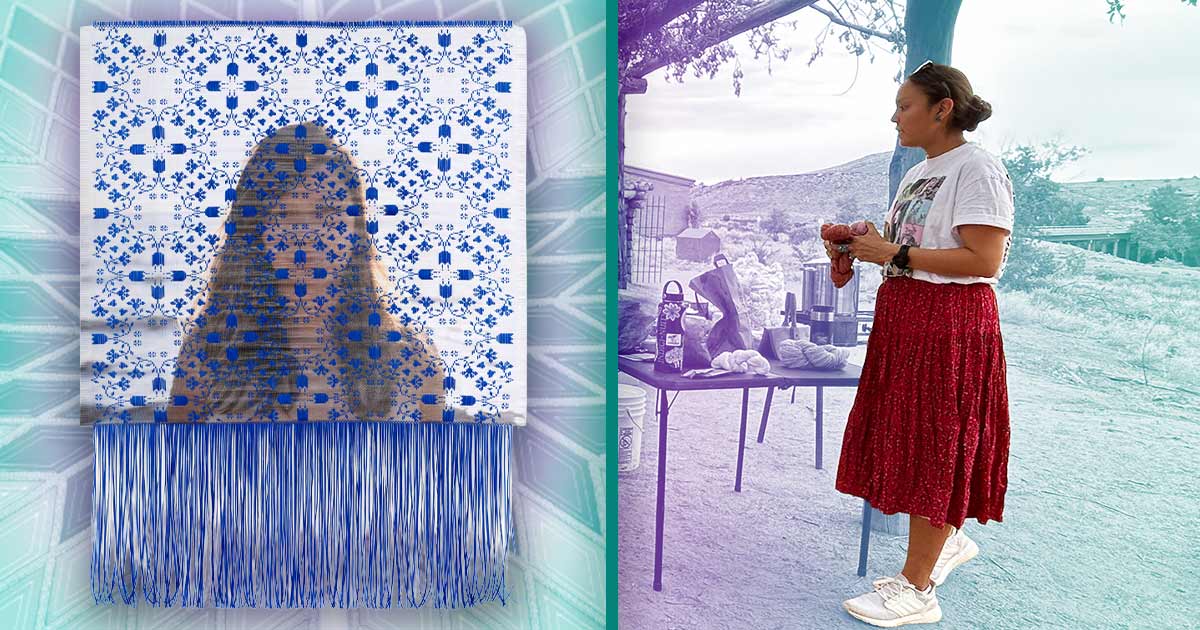
Woven into the Fabric of Diné Culture
By Sarah Elisabeth Sawyer (Choctaw Nation), Artist in Business Leadership Fellow 2015
Darby Raymond-Overstreet (Diné) is a digital artist and printmaker. She received her B.A.s in Psychology and Studio Art and graduated with Honors from Dartmouth College in Hanover, New Hampshire in 2016. During her first time at the Santa Fe Indian Market (SWAIA) in 2018, she won multiple awards and received exposure in the Albuquerque Journal and Santa Fe New Mexican.
Darby is a 2019 First Peoples Fund Artist in Business Leadership Fellow and resides in Santa Fe, New Mexico.
Darby sits with her portrait subject on their couch, going through photo albums as they tell the stories behind each photo they show her.
Those moments of sitting there with the person she is going to create a portrait of, reliving the experiences that have shaped their life gives Darby a feel for what she is going to create. Every portrait she does incorporates intentional, meaningful patterns. After careful consideration, she selects one of the photos. Based on the person’s personality, and inspired by Navajo weavers in the late 1880s-1950s, Darby chooses a rug pattern.
“I really respect weavers’ artistic integrity and their fortitude and resilience through hardship,” she says. “If not for their efforts, it may be that some of the people today would not have been woven into the cultural fabric that is Diné.”
Darby finds patterns in books, collections, museums, and sometimes from her own family, then scans the design and drops it into her digital program. It becomes an endless pattern.
Using digital tools, Darby overlays the photo and rug pattern, meticulously designing and interweaving them. When finished, she prints the portrait on canvas with archival inks and uses churro yarn to attach it to a traditional weaving loom she built. The entire process of creating a one of a kind portrait wall hanging takes up to 40 hours.
“The technique is something I came up with my senior year at college,” she says. “My professors were trying to get me to talk about the concept of creating pattern portraits, and the loom was a great way to put the idea out there of being woven into a culture, a society, an identity, and to have it really accessible to an audience.”
“Interwoven” is a piece Darby created from a photo of her mother and herself, enhanced with turquoise stone and mother of pearl inlay.
“Through the time we spent being nourished in her womb, we are interwoven,” she says. As part of her landscape series, Darby is using funds from FPF to travel and capture photos of sites important to her people.
“My efforts are to not only celebrate my Diné identity and heritage,” she says, “but to educate and give perspective on the history and relationship that the art of weaving has with my ancestors, current generations, and the history and landscape of the Southwest.”








































































































